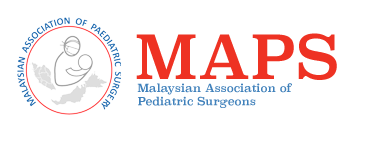Background
I am honoured and privileged to have been invited to give this year’s 39 thAM Ismail Oration. Tan Sri Dato’ Abdul Majid Ismail, a renowned Orthopaedic surgeon is known to many. He founded the College of Surgeons of Malaysia and also became the Director General of the Ministry of Health in 1971. I am privileged to have started my career in medicine after my housemanship in 1971. He was the Director General of Health I reported to. In a way he shaped my future by seconding me to Universiti Kebangsaan Malaysia (UKM) as a trainee lecturer in surgery in 1972. He is known to many especially the older generation for his immense contributions to the development and modernisation of the Health care services of Malaysia. Not many are aware even in UKM of his contribution to the establishment of the Faculty of Medicine UKM and the support he gave to it in the early years of its development.
It is especially important to mention his contribution to UKM as this year is the celebration of the 40 thyear of the establishment of UKM’s Faculty of Medicine. He and Dr Ungku Omar bin Ungku Ahmad the Director of the Institute for Medical Research (IMR) was instrumental in bringing to the attention of the Prime Minister Tun Abdul Razak the idea of another medical faculty. The Prime Minister was keen on the idea. This led Dr Ungku Omar to arrange for a meeting at the IMR. Among those present were Tun Razak himself, Tun Dato’ Dr Ismail bin Abdul Rahman the Minister of Foreign Affairs himself a medical doctor, Tun Tan Sri Dato’ Syed Nasir the Director of Dewan Bahasa dan Pustaka, Tan Sri Dato’ Sheikh Hussein, Tun Tan Sri Dato’ Abdullah bin Salleh, Tan Sri Dato’ Dr Majid Ismail and a few others.
This meeting affirmed the need for a second faculty of medicine in the country and at UKM to address the issue of under representation of Malays in the medical profession and to provide better opportunities for students coming from the Malay medium of instructions schools to do medicine. There were only about 4% Malay and Bumiputra doctors in the country around 1970 and in my class of eighty at the University of Malaya in 1965 there were only four Malays. Tan Sri Dato’ Dr Abdul Majid Ismail who was then the Director General of the Ministry of Health played a significant role in assisting the development of the faculty. A piece of land behind the Maternity Hospital adjacent to the TPCA Stadium was allocated to build five blocks of temporary wooden buildings which surprisingly has survived to this day. The building was completed in a record time of four months. The Ministry of Health also removed bodies from the graves of unclaimed bodies of the hospital from an area close to Lake Titiwangsa and the Police Training school to a new site in Sungai Buloh. This piece of land was later used to construct the student’s hostels and a few blocks of staff housing.
To give a glimpse of the challenges faced by Tan Sri Abdul Majid Ismail in modernizing the health facilities after Merdeka a look at the early Hospitals of Kuala Lumpur (Pauper’s Hospital) is relevant in this oration as this is the ground where Paediatric surgery took its roots. The first building was started in 1920. This was never completed during the slump. The ruins came to be known as the ‘Huxley’s Ruins’ which is now the site of the Orthopedic clinic. A new hospital was built in 1930 with Malay, Chinese and Indian wards. British officers and family were at a better facility at Tanglin Hospital. A lot of credit must therefore be given Tan Sri AM Ismail who as Director of Planning in the Ministry of Health started the planning of a new hospital for Kuala Lumpur as we now see it.
His attempt to establish the College of Surgeons to be on the same footing as the British Royal Colleges however did not materialize as the government made the decision to place the responsibility for Postgraduate Medical Education to the Universities but with the involvement of the Profession and the Ministry of Health. This later led to the formation of the Conjoint Committee on Postgraduate Medical Education and its subcommittees around early 1980 consisting of the representatives of the Universities, Ministry of Health and Academy of Medicine. I was the first chairman of the main committee with Dr Yeoh Poh Hong and Dr Megat Burhanudin representing the Academy of Medicine and Ministry of Health respectively. The secretary was Dr Zainol Arif the under secretary of the Ministry of Education.
This committee under the Ministry of Education was formed to advise the Minister on matters pertaining to Postgraduate Medical Education. The College of Surgeons of Malaysia is now playing an active role as a chapter under the umbrella of the Academy of Medicine in the subcommittees of all the surgical specialties including participation in the conjoint examinations.
